UN: Israel’s war on Gaza is genocide
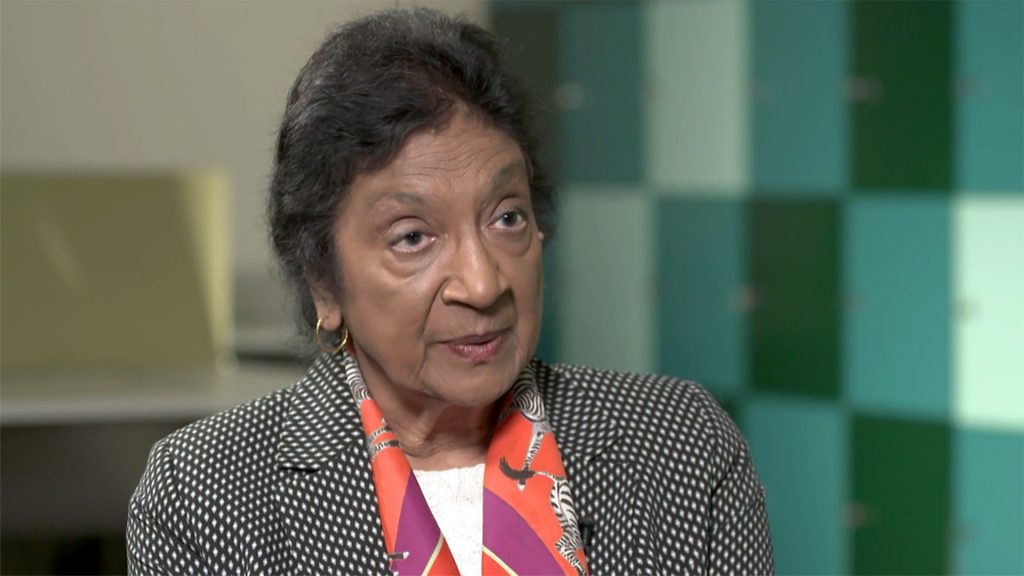
Nearly two years into Israel’s war on Gaza, a United Nations fact-finding mission has delivered its most damning verdict yet: genocide. Navi Pillay, chairwoman of the UN Independent International Commission of Inquiry on the Occupied Palestinian Territory, says Israeli leaders’ statements and the destruction on the ground prove intent. Speaking to Hashem Ahelbarra in Geneva, she explains the commission’s findings, what legal consequences Israel could face and what must happen next. As famine sets in and civilian casualties mount, Pillay outlines why this report could mark a turning point in international accountability – and whether the UN will be able to act on its own conclusions. Published On 16 Sep 202516 Sep 2025 Click here to share on social media share2 Share Adblock test (Why?)
Belarusians detained after drone flown over Polish president’s residence

Polish Prime Minister Donald Tusk says an investigation is under way after drone spotted over government buildings in Warsaw. Authorities in Poland have said that two Belarusian citizens were detained and a drone was “neutralised” after it was flown over government buildings and the presidential residence in the capital city, Warsaw. Polish Prime Minister Donald Tusk said early on Tuesday that members of the country’s State Protection Services apprehended the two Belarusians, and police were “investigating the circumstances of the incident”. Recommended Stories list of 4 itemsend of list The Associated Press news agency quoted Colonel Boguslaw Piorkowski, a spokesperson for the protection service, saying that the drone was not shot down by Polish forces but landed after authorities apprehended the operators. “The impression is that this is not something that flew in from abroad but rather launched locally,” Katarzyna Pelczynska-Nalecz, Poland’s minister of development funds and regional policy, told local media outlet TVN 24, according to the AP. The minister also advised the public against rushing to conclusions or associating the incident with last week’s high-profile incursion by multiple Russian drones into Polish airspace during an aerial attack on neighbouring Ukraine, the AP reported. Przed chwilą Służba Ochrony Państwa zneutralizowała drona operującego nad budynkami rządowymi (Parkowa) i Belwederem. Zatrzymano dwóch obywateli Białorusi. Policja bada okoliczności incydentu. — Donald Tusk (@donaldtusk) September 15, 2025 Translation: Just now, the State Protection Service neutralised a drone operating over government buildings (Parkowa) and the Belweder. Two Belarusian citizens were detained. The police are investigating the circumstances of the incident. The reported arrest of the Belarusian drone operators by Polish authorities comes as thousands of troops from Belarus and Russia take part in the “Zapad (West) 2025” military drills, which kicked off on Friday and are due to end on Tuesday. Advertisement Poland, Latvia and Lithuania, which border Belarus, closed their frontier crossings and bolstered defences in advance of the exercises, which authorities in Minsk said involve 6,000 soldiers from Belarus and 1,000 from Russia. Poland is also on high alert after last week’s Russian drone incursions, which led to Polish and NATO fighter jets mobilising to defend against what was described as an “unprecedented violation of Polish airspace” by Moscow. Polish F-16 and Dutch F-35 fighter jets, as well as Italian AWACS surveillance planes, deployed to counter the drones, marking the first time that NATO-allied forces have engaged Russian military assets since Moscow’s full-scale invasion of Ukraine in February 2022. One of the drones damaged a residential building in Wyryki, eastern Poland, though nobody was reported injured, according to the Reuters news agency. On Friday, NATO Secretary-General Mark Rutte announced that the Western military alliance would increase its defence “posture” in Eastern Europe following the Polish airspace violation. Operation “Eastern Sentry” will include military assets from a range of NATO members, including Denmark, France, Germany and the United Kingdom, Rutte said, describing the incursion as “reckless” and “unacceptable”. Amid the increased tension with Russia, NATO member Romania also reported a drone incursion on Saturday, which led to the scrambling of two F-16 fighter jets as well as two Eurofighters and a warning to Romanian citizens to take cover. Romanian Minister of National Defence Ionut Mosteanu said the fighter jets came close to shooting down the drone before it exited Romanian airspace into neighbouring Ukraine. Moscow’s ambassador to Romania was summoned by the Ministry of Foreign Affairs on Sunday, where Bucharest “conveyed its strong protest against this unacceptable and irresponsible act, which constitutes a violation of [its] sovereignty”. Russia was “urgently requested… to prevent any future violations”, the Romanian Foreign Ministry said in a statement. Adblock test (Why?)
Suspect in Charlie Kirk’s murder linked to scene by DNA, FBI chief says
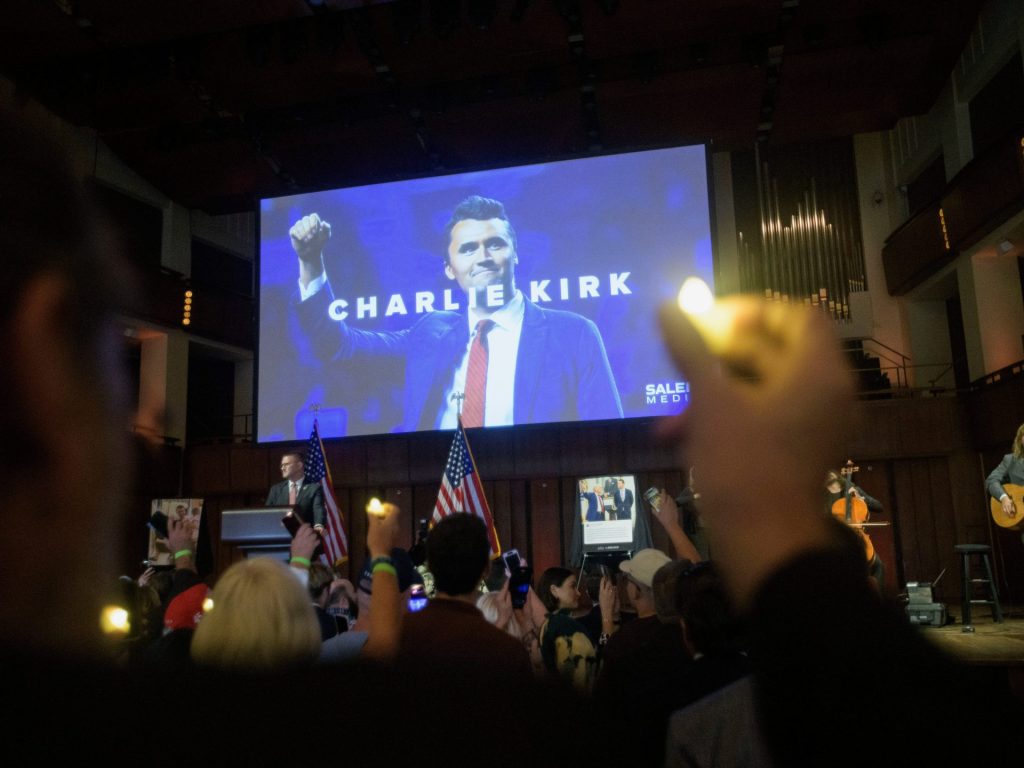
DNA evidence links the suspect in the assassination of the conservative American activist Charlie Kirk last week to the scene of the crime, the director of the FBI has said. DNA from a towel and a screwdriver recovered from the crime scene both match Tyler Robinson, FBI Director Kash Patel said on Monday. Recommended Stories list of 4 itemsend of list Robinson, 22, was arrested by police on Thursday after a 33-hour manhunt for the killer. “I can report today that the DNA hits from the towel that was wrapped around the firearm and the DNA on the screwdriver are positively processed for the suspect in custody,” Patel said in an interview on Fox News’s Fox & Friends. Patel said Robinson had also expressed his desire to “take out” Kirk in a text exchange with another person, and had written a note detailing his plans to commit the crime. Patel said the note had been destroyed, but investigators recovered forensic evidence of its existence at the home of Robinson and his romantic partner, who prosecutors have said has been cooperating in the investigation. “We have evidence to show what was in that note, which is… basically saying… ‘I have the opportunity to take out Charlie Kirk, and I’m going to take it’,” he said. Kirk, the CEO and cofounder of conservative youth activist organisation Turning Point USA and a close ally of US President Donald Trump, was shot dead last Wednesday during a speaking event at a university in Utah. The killing of Kirk, a polarising figure who was lionised by conservatives and reviled by liberals, has provoked condemnation across the political spectrum, while drawing attention to deep political divisions in the United States and raising fears of further political violence. Advertisement The murder has also prompted calls for retribution among the political right, including from Trump, who has promised to use the power of the federal government to crack down on left-wing networks that he claims are driving violence. On Monday, Trump said his administration was looking into bringing racketeering charges against left-wing groups believed to be funding agitators, and favoured designating the loose-knit antifascist group Antifa as domestic terrorists. In an appearance as guest host of Kirk’s podcast, Vice President JD Vance threw his support behind a grassroots online campaign to get people who celebrated Kirk’s death fired, urging listeners to “call them out” and “call their employer.” Numerous employees across the US have been fired or put on leave over their social media commentary about Kirk’s death, not all of whom celebrated or justified the assassination. Washington Post columnist Karen Attiah said on Monday that she had been fired over her social media posts about Kirk. In a column on Substack, Attiah said she had been terminated for “speaking out against political violence, racial double standards, and America’s apathy toward guns.” Attiah included a number of past posts about political violence in her column, only one of which mentioned Kirk specifically. That posted misquoted Kirk as saying that black women “do not not have the brain processing power to be taken seriously.” Kirk’s actual comments specifically referred to the intelligence of four black women, including former first lady Michelle Obama and Supreme Court Justice Ketanji Brown Jackson. Trump’s pledge to crack down on what he says is left-wing extremism has raised fears that his administration may seek to use Kirk’s murder as a pretext to stifle legitimate dissent. Responding to a claim by Vance that “most of the lunatics” in US politics reside on the far-left, Democratic lawmaker Greg Casar accused the Trump administration of weaponising concerns about political violence against its opponents. “He cannot be allowed to use the horrible murder of Charlie Kirk as a pretext to go after peaceful political opposition,” Casar, who represents a Texas district in the US House of Representatives, said in a statement. High-profile acts of political violence have targeted figures on both the left and right of US politics in recent years. They include the killing of a Democratic state lawmaker and her husband in Minnesota in June, two assassination attempts on Trump during the 2024 presidential campaign, and a 2022 hammer attack on the husband of Democratic former House Speaker Nancy Pelosi. Advertisement Experts say that politically motivated attacks and threats are on the rise in the US. More than 250 incidents of threats and harassment against local officials were reported in the first half of 2025, a 9 percent increase from the previous year, according to the Bridging Divides Initiative at Princeton University. While little information has been released about Robinson’s suspected motive so far, Patel on Monday affirmed an earlier assertion by Utah Governor Spencer Cox that the suspect espoused left-wing views. “His family has collectively told investigators that he subscribed to left-wing ideology, and even more so in these last couple of years,” Patel said. Adblock test (Why?)
Nepal, Bangladesh, Sri Lanka: Is South Asia fertile for Gen Z revolutions?
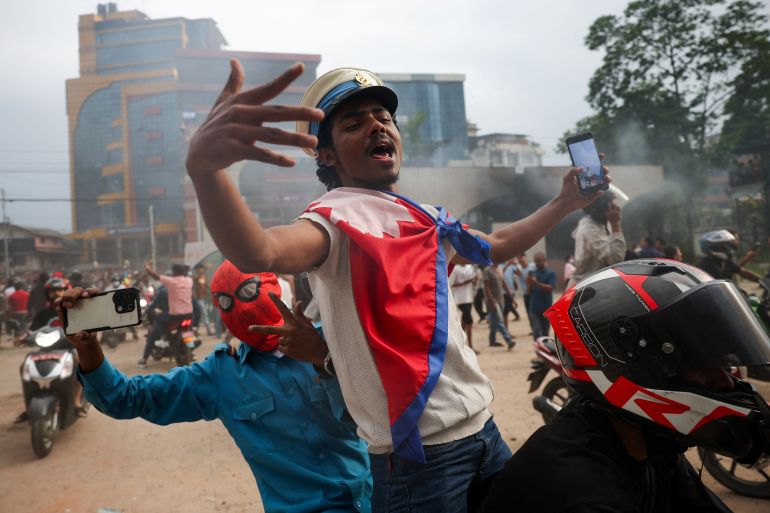
New Delhi, India — The rattle of iron gates sounded like drumbeats as the crowd surged forward. A sea of bodies stormed through the barricades, which had stood as sentinels of power barely hours ago. The hallways of the house of the country’s leader echoed with the thunder of muddy footsteps. Some smashed windows and artefacts, others picked up luxury bedsheets or shoes. The building and its plush interiors had been symbols of crushing authority, impenetrable and out of reach for the country’s teeming millions. Now, however, they briefly belonged to the people. This was Nepal last week. It was also Sri Lanka in 2022, and Bangladesh in 2024. As Nepal, a country of 30 million people sandwiched between India and China, now plots its future in ways alien to traditional electoral democracies, the spate of youth-led protest movements that have toppled governments one after the other in South Asia has also sparked a broader question: Is the world’s most densely populated region Ground Zero for Gen Z revolutions? “It’s certainly very striking. There’s this kind of new politics of instability,” said Paul Staniland, an associate professor of political science at the University of Chicago, whose research focuses on political violence and international security in South Asia. On Thursday, some 10,000 Nepali youth, including many in the diaspora, voted for an interim prime minister not through physical or electoral ballots, but through an online poll on Discord, a platform primarily used by gamers. Nepal, where three days of protests against corruption and nepotism turned violent, with a crackdown by security forces leading to the death of more than 70 people, has announced new elections in March. Advertisement But the protests, which forced Prime Minister KP Sharma Oli to resign days after he had mocked the Gen Z origins of the agitators, have already shown that in nation after nation in South Asia, increasingly frustrated young people are grabbing power and declaring themselves boss when they feel betrayed by political systems out of tune with their demands. This is a dramatic shift for South Asia, a region that has long been home to major political protests, but rarely ones where regimes are overthrown, Staniland told Al Jazeera. “This is a very different kind of orientation from a world that has military coups, or the main form of political conflict is something else,” he added, referring to the ways political crises in the region have previously often played out. Each of the protest movements – in Sri Lanka, Bangladesh and Nepal – was rooted in specific histories and was triggered by events unique to that country. Yet, analysts say, there is a common thread that runs through the rage that exploded in these countries: a generation that is refusing to live with broken promises, and the factors driving them. These movements, experts say, also appear to be learning from each other. From Colombo to Dhaka to Kathmandu: The backdrop The Gen-Z protests in Kathmandu kicked off after the government banned social media platforms, citing misuse and the failure of the platforms to register with regulators. But the grievances ran much deeper: inequality, corruption and nepotism were the major triggers for young people in a country where remittances sent home by Nepalis abroad represent a third of the nation’s economy. Thousands of teenagers hit the streets, many still in school uniforms. More than 70 people were shot dead, and hundreds more were injured. But the violence unleashed on protesters by security forces only aggravated the crisis. Some demonstrators torched the parliament, while others set the houses of other political parties, some leaders, and even Nepal’s largest media house on fire. Protesters also broke into Oli’s house, ransacking it. Oli resigned a day later. It was very different in Bangladesh in 2024. There, it began with a student-led campaign against discriminatory job quotas. But by the summer, after a series of police crackdowns on mostly peaceful protesters killed hundreds of civilians, the movement’s character shifted to a broad coalition demanding an end to Prime Minister Sheikh Hasina’s long hardline government. Protests had a loose leadership structure: student leaders issued ultimatums and lists of demands to the government, and opposition figures provided support. Everything Hanisa’s government did – from brutal assaults on student agitators to telecommunications blackouts – only aggravated the crisis. Ultimately, on August 5, 2024, the prime minister quit, escaping to close ally India by helicopter. Advertisement Two years before the upheaval in Bangladesh, Sri Lanka had its own moment. There, the protests were a response to an economic collapse as Sri Lanka defaulted on its debt. By March 2022, daily life had become dire: 12-hour power blackouts, miles-long queues for fuel and cooking gas, and inflation above 50 percent. Sri Lanka’s “Aragalaya” movement, which stands for “The Struggle” in Sinhala, was born. Youth activists set up a protest camp they called “GotaGoGama” (“Gotta Go Village”), in front of Colombo’s Presidential Secretariat. It was a reference to President Gotabaya Rajapaksa, whose family had governed the country for 15 of the previous 18 years. The site became a hub of rallies, art performances and speeches. In mid-July, Rajapaksa fled the country after his residence was overrun by demonstrators. Demonstrators capture footage on their mobile phones outside the Parliament complex, during a protest against the killing of 19 people, after anticorruption protests and during a curfew in Kathmandu, Nepal, September 9, 2025 [Adnan Abidi/Reuters] ‘Dissonance was too high’ To Meenakshi Ganguly, deputy Asia director of Human Rights Watch, the overthrow of powerful governments by youth-led movements in the three countries has common foundations: unaddressed socioeconomic disparities and corruption by an entrenched political elite that left them disconnected from the challenges of younger generations. Many in Gen Z have experienced two economic recessions in their lifetimes: in 2008-09 and then in the wake of COVID-19. Ganguly said that the generation had also two formative years in isolation, cut off from their peers physically, though those pandemic years also amplified their use of digital platforms to unprecedented
Duplantis breaks pole vault world record to win gold in Tokyo

Sweden’s Armand ‘Mondo’ Duplantis sails over the bar to set a 14th pole vault record at the World Athletic Championships in Tokyo. Published On 15 Sep 202515 Sep 2025 Click here to share on social media share2 Share Mondo Duplantis has broken the pole vault world record for the 14th time with a jump of 6.3m (20ft, 8 inches) on his third attempt as he wins a third straight world title. The gold medal was already secure for the American-born Swede on Monday when he had the bar raised a centimetre (0.4 inches) higher than the record height of 6.29m he managed in Budapest last month. Recommended Stories list of 3 itemsend of list He failed by the narrowest of margins at his first two attempts but, roared on by a captivated crowd at the National Stadium, slid over on the third with the bar giving a slight wobble before settling. The stadium exploded as the 25-year-old raced over to celebrate with his family in the crowd before being mobbed by his delighted rivals. It was a stark contrast with the scenes at the same arena four years ago when Duplantis won the first of his two Olympic titles with the Tokyo public locked out because of the COVID pandemic. Seven of the 12 vaulters cleared 5.90m in an unusually strong competition but the contest, such as it was, soon came down to Duplantis and Greece’s Emmanouil Karalis. Karalis, bronze medalist behind Duplantis at the Paris Olympics, secured the silver medal with a jump of 6.00m but failed at 6.10m, 6.15m and 6.20m as he tried to put some pressure on the reigning champion. Duplantis sailed over at 6.10m and 6.15m and then gave the crowd and athletics world what it wanted with his fourth world record jump of the season. Duplantis sets his new world record in the men’s pole vault final [Ben Stansall/AFP] Adblock test (Why?)
Trump is moving away from aiding Ukraine
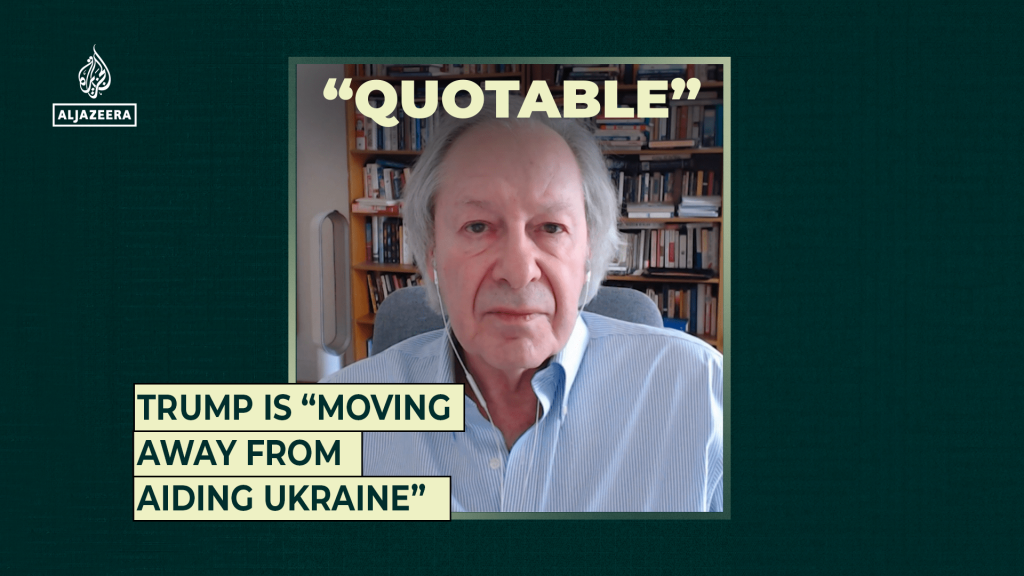
New York Times correspondent Steven Erlanger says Trump is pulling back on sending arms and money to Ukraine but continues providing a key element: operational intelligence. Published On 15 Sep 202515 Sep 2025 Click here to share on social media share2 Share Adblock test (Why?)
Who are the 57 members of the Organisation of Islamic Cooperation?
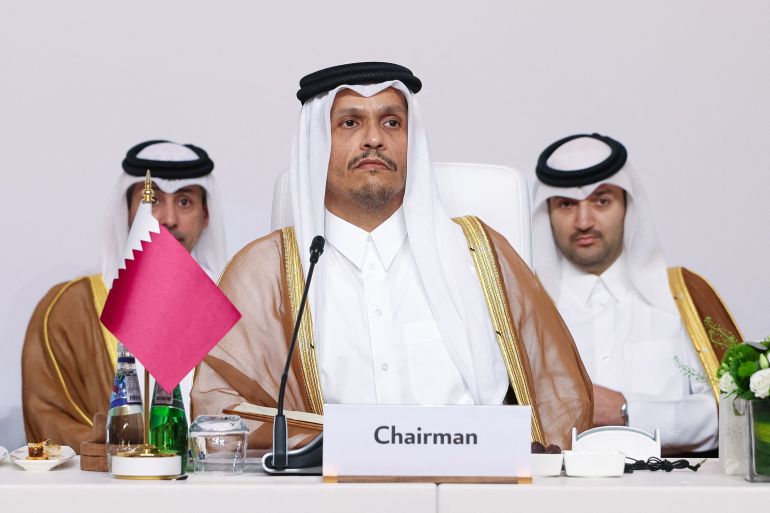
Leaders from across the Arab League and the Organisation of Islamic Cooperation (OIC) have gathered in Doha for an Arab-Islamic summit to forge a unified stance on Israel following its attack on a Hamas office in Qatar’s capital on September 9 that killed six people. The emergency summit of the Arab League and OIC began on Monday, following a closed-door meeting of foreign ministers in Doha, where a draft resolution outlining concrete measures against Israel was prepared. “It’s time for the international community to abandon dual standards and to hold Israel accountable for all the crimes it has committed,” Qatari Prime Minister Sheikh Mohammed bin Abdulrahman bin Jassim Al Thani said before the meeting, adding that the attack must be met with “fierce” and “firm” measures. Qatar’s Prime Minister Mohammed bin Abdulrahman bin Jassim Al Thani chairs a preparatory meeting in Doha on September 14, 2025, before the Arab-Islamic summit [Handout image from Qatar’s Ministry of Foreign Affairs via AFP] The Qatari leader also chided Israel’s continuous derailment of Gaza ceasefire talks, stating: “Israel must know that the continuous genocidal war against the Palestinian people, aiming at forcibly transferring them outside their homeland, cannot succeed, no matter what false justification is provided.” Israel’s attack on Qatar was part of a broader wave of strikes extending beyond its borders, marking the sixth country Israel had targeted in 72 hours and the seventh since the start of this year. [Al Jazeera] Who are the 22 members of the Arab League? Among the attendees are representatives from the Arab League, a group of 22 member nations stretching from North Africa to the Gulf and representing primarily Arab-majority states, with a combined population of nearly 500 million — about six percent of the world’s population. Advertisement Officially known as the League of Arab States, the Arab League was established in Cairo on March 22, 1945, by seven founding members: Egypt, Iraq, Transjordan (now Jordan), Lebanon, Saudi Arabia, Syria and Yemen. Its creation reflected the shared desire of Arab countries emerging from colonial rule to coordinate their political stances, promote regional solidarity and safeguard their sovereignty and independence. Over the decades, membership grew to 22 states, stretching from North Africa to the Gulf. Egypt was suspended in 1979 after signing a peace treaty with Israel, but its membership was reinstated in 1989. Libya was suspended during the 2011 uprising but readmitted later that year. Syria was suspended in 2011 amid its civil war and reinstated in 2023. [Al Jazeera] The group accounts for about 3.25 percent of global gross domestic product (GDP), with several members ranked among the world’s leading oil producers. Countries such as Saudi Arabia, Iraq, Kuwait, the United Arab Emirates, Libya, and Algeria are also part of the Organization of the Petroleum Exporting Countries (OPEC), and hold some of the largest proven oil reserves. Collectively, Arab League members produce about a quarter of the world’s oil. All Arab League members are also part of the 57-member OIC. Who are the 57 members of the OIC? The OIC, which was formed in 1969 in response to an arson attack on Jerusalem’s Al-Aqsa Mosque, brings together 57 countries with significant Muslim populations across Asia, Africa, Europe, and the Americas. In September 1969, Muslim leaders met in Rabat, Morocco, to establish a body that would safeguard Islamic holy sites, protect shared political and economic interests, and promote solidarity among Muslim-majority nations on the global stage. Over time, its membership expanded from 30 to 57 states, reflecting its growing reach. Today, the OIC represents more than 2.1 billion people — about 26 percent of the world’s population and 8 percent of the world’s GDP. [Al Jazeera] In its early years, the OIC had loose membership rules. Its original charter allowed any Muslim state to join with the approval of two-thirds of existing members, which opened the door for countries without Muslim majorities but with significant Muslim populations. These include Gabon, the Maldives, Mauritania, Uganda, Mozambique, Cameroon, Togo, Benin, the Ivory Coast and Guinea-Bissau. In the Americas, Guyana and Suriname joined despite having relatively small Muslim communities. The 2008 charter revision made membership stricter. Now, a country must be a United Nations member (with Palestine as the exception), have a Muslim-majority population, abide by the charter and apply formally. Even then, admission requires consensus among all 57 members — a difficult task. Advertisement Albania is the only European state in the OIC. The organisation has maintained a consistent and forceful stance against Israeli actions, particularly regarding occupation and military offensives in Palestine. Over the past three years, the OIC has convened several emergency summits and ministerial meetings — most notably in Riyadh, Jeddah and Istanbul – to condemn Israeli attacks on Gaza, the occupied West Bank, and, more recently, strikes involving Iran and Qatar. The group has repeatedly called for immediate ceasefires, protection of Palestinian civilians and international accountability for what it describes as “Israeli crimes”. Adblock test (Why?)
India vs Pakistan Asia Cup match hit by ‘no handshake’ controversy
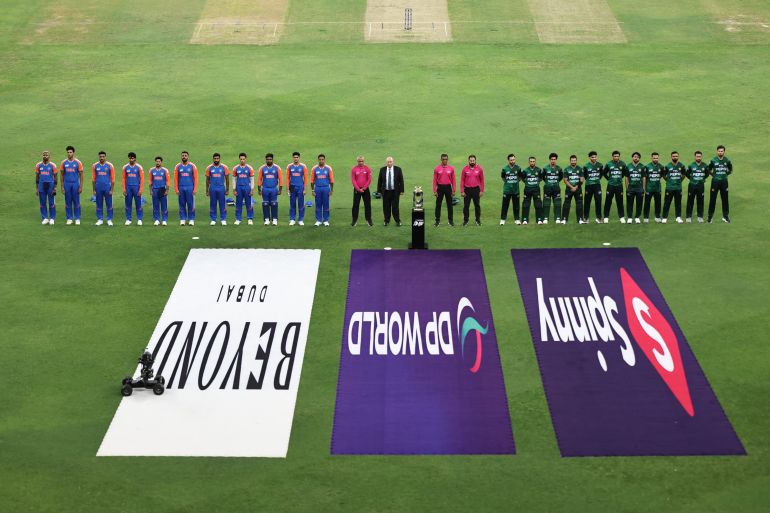
Dubai, UAE – The wide-ranging ramifications of an ongoing political standoff between India and Pakistan have led to a controversial conclusion of the archrivals’ cricket match at the Asia Cup 2025 in Dubai, where India’s captain Suryakumar Yadav confirmed that his squad opted against shaking hands with their opponents as a mark of protest. When Sunday’s Group A fixture between the South Asian archrivals was confirmed after long deliberations from the Indian government, fans and experts had hoped that the on-field action could help cool the off-field heat. Recommended Stories list of 3 itemsend of list Yadav, though, crushed all expectations by saying his team’s thumping seven-wicket win in the T20 match was a “perfect reply” to Pakistan in the wake of the intense four-day cross-border conflict that brought both countries to the brink of an all-out war in May. “Our [Indian] government and the BCCI [Board of Control for Cricket in India] were aligned on the decision to play this match. We came here just to play the match and gave them [Pakistan] a perfect reply,” Yadav told the media shortly after the match. What happened at the end of the India vs Pakistan match? Yadav, who hit the winning runs for India, walked off the field alongside his batting partner, Shivam Dube, without approaching the Pakistani captain and team for the traditional post-match handshakes. Pakistan’s players trudged off in a group and waited for the Indian squad and support staff to come out and shake hands, as is the norm at the end of cricket matches. However, the Indian contingent only shook hands with each other before walking into their dressing room and shutting the door as the waiting Pakistan players looked on. No handshakes between the teams. Salman Agha looked to lead Pakistan over to the India dressing room, but nothing doing. They all headed straight in #INDvPAK pic.twitter.com/0BbJtYdkAf — Paul Radley (@PaulRadley) September 14, 2025 Advertisement Why did Indian team refuse to shake hands with Pakistani players? The Indian captain was asked to clarify his team’s actions and whether they were in contradiction with the spirit of the sport. “A few things in life are above sportsman’s spirit,” the 35-year-old swiftly responded. “We stand with all the victims of the Pahalgam terror attack and with their families, and dedicate this win to our brave armed forces who took part in Operation Sindoor.” Yadav was referring to the Indian armed forces’ multiple missile attacks on six locations inside Pakistan. India said the missiles were in response to the April 22 attack on tourists in Indian-administered Kashmir in Pahalgam, in which 26 men were killed. An armed group called The Resistance Front (TRF), which demands independence for Kashmir, claimed responsibility for the attack, but India had alleged Pakistani involvement. Two days later, Pakistan responded to the missile strikes by attacking military installations across its frontier with India and Indian-administered Kashmir, striking at least four facilities. The conflict ended four days later, thanks to an internationally-brokered ceasefire. While the exchange of aerial fire came to a halt, the diplomatic ties between the neighbours remained suspended, and the political tension spilled over into cricket when the fixture between India and Pakistan was announced by the Asian Cricket Council (ACC). Did India break any rules by not shaking hands? As a result, the match was played under a highly charged political climate, and when both captains did not indulge in the customary handshake at the pre-match toss, the focus swiftly shifted to the interactions between the teams. However, Al Jazeera has learned that the match referee, Andy Pycroft, had asked Yadav and his counterpart, Agha, to skip the pre-toss ritual. “The match referee requested both captains to not shake hands at the toss,” an official of the Pakistan Cricket Board (PCB), requesting anonymity, told Al Jazeera after the match. Match officials also granted India permission to skip the post-match handshakes with Pakistan, but did not inform Agha or his team, according to the source. This resulted in an awkward-looking post-match scenario, where the Pakistani players followed Yadav off the pitch and waited for the Indians to emerge, only to watch them shut the dressing room door. How did Pakistan respond? Pakistan’s manager Naveed Akram Cheema lodged a protest against the Indian cricket team’s actions with Pycroft, who is an International Cricket Council (ICC) accredited match referee. Advertisement “The umpires had allowed the Indians to walk off the field without shaking hands for which the match referee apologised after the protest of our team manager,” the official said. Additionally, Pakistan captain Agha did not speak at the post-match captain’s chat with the host broadcaster in a mark of protest. Mike Hesson, Pakistan’s head coach, confirmed that Agha’s refusal to show up for the talk and the media briefing was a “follow-on effect” of the Indian team’s actions. “We were ready to shake hands at the end of the game, but our opposition did not do that,” Hesson said. “We sort of went over there to shake hands, and they had already gone into the changing room.” Indian and Pakistani players stand for their national anthems before the start of the match [Fadel Senna/AFP] Why are handshakes important in cricket, and what’s the protocol? As per the norm in cricket, the two on-field players of the team batting second shake hands with the fielding team and the umpires before walking off. And in what is now a common practice in all international cricket matches, the batting team then enters the ground to shake hands with their opponents. It offers both sides to end the match on a friendly note and exchange words of encouragement. In the same manner, both teams’ captains shake hands before the toss, which takes place 30 minutes before the start of play. The toss is conducted by the match referee on the pitch and usually broadcast live. Both captains and the match referee can also indulge in a pre-match chat regarding team lineups or any other matters of
Suspect in Charlie Kirk’s murder has ‘leftist ideology’, Utah governor says
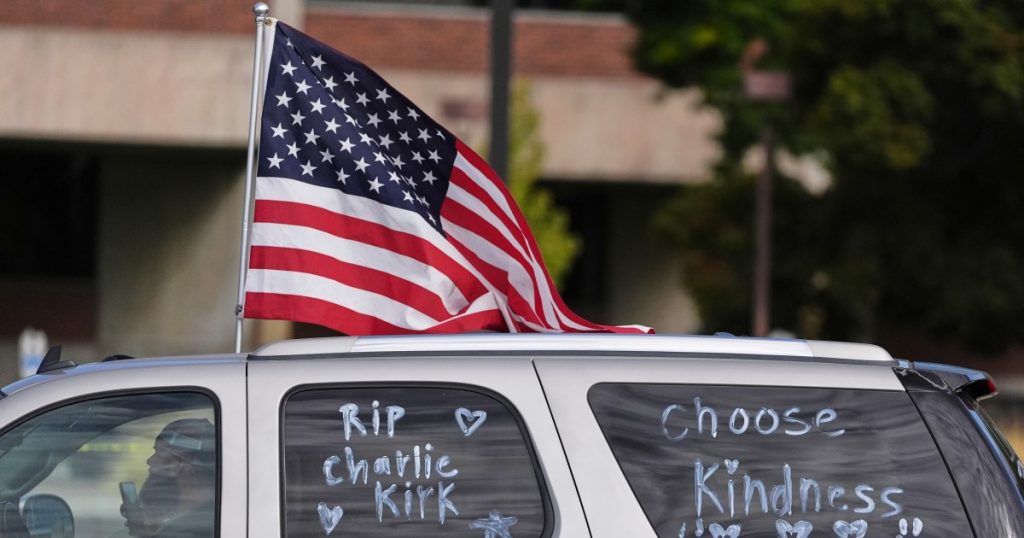
The suspect in the assassination of the conservative American activist Charlie Kirk espoused left-wing views, Utah’s governor has said, amid heightened tensions and recriminations over surging political violence in the United States. In an interview with NBC News’s Meet the Press on Sunday, Utah Governor Spencer Cox said the arrested suspect, 22-year-old Tyler Robinson, had a “leftist ideology” despite growing up in a conservative family. Recommended Stories list of 4 itemsend of list “We can confirm that, again, according to family and people that we’re interviewing, he does come from a conservative family. But his ideology was very different than his family, and so that’s part of it,” Cox said. Cox, a Republican, did not elaborate on Robinson’s suspected motive, but said the suspect had spent time in “dark places” online. “We do know, and again, this has been well publicised, that this was a very normal young man, a very smart young man,” Cox said. According to public records, Robinson registered as a nonpartisan voter in Utah, while his parents are registered Republicans. In a separate interview with CNN’s State of the Union, Cox said the information about Robinson’s left-wing views had come from interviews with family members and friends. “I really don’t have a dog in this fight. If this was MAGA, and a radicalised MAGA person, I would be saying that as well,” Cox said, referring to US President Donald Trump’s Make America Great Again movement. “That’s not what they’re sharing.” Cox also confirmed reports that Robinson had a romantic relationship with his transgender roommate, who was transitioning from male to female. Advertisement “This partner has been incredibly cooperative, had no idea that this was happening, and is working with investigators right now,” he said. Cox said he was not aware if Robinson’s relationship had any relevance to the assassination, but that authorities were investigating. “We’re trying to figure it out. I know everybody wants to know exactly why, and point the finger, and I totally get that. I do too,” he said. Kirk, the leader and cofounder of youth activist group Turning Post USA and a close ally of Trump, was shot dead on Wednesday during a speaking appearance at Utah Valley University. A key figure on the political right, Kirk was described in media profiles as a “rock star” among young conservatives, and played a pivotal role in driving the youth vote in Trump’s November re-election. A polarising figure, Kirk was lionised by conservatives as a defender of traditional values and a champion of free speech, but seen by liberals as an incendiary figure who stoked hatred towards racial minorities and members of the LGBTQ community. While both Republican and Democratic leaders have condemned Kirk’s murder, the killing has drawn attention to the extreme political polarisation pitting everyday Americans against one another. In the aftermath of Kirk’s assassination, some left-leaning Americans took to social media to celebrate, prompting outrage from conservatives and the launch of online campaigns to get people deemed disrespectful of Kirk’s memory fired from their jobs. On the right, some figures invoked the rhetoric of retribution and war. “If they won’t leave us in peace, then our choice is to fight or die,” tech billionaire Elon Musk said on X. Trump, who swiftly denounced the rhetoric of the “radical left” after Kirk’s killing, has declined opportunities to stress the need for unity and avoid partisan blame since the assassination. Speaking on Fox News’s Fox & Friends on Friday, Trump sought to paint left-wing extremism as worse than extremism on the right. “The radicals on the right oftentimes are radical because they don’t want to see crime,” Trump said. “The radicals on the left are the problem, and they’re vicious and they’re horrible, and they’re politically savvy.” In an interview with NBC News on Saturday, Trump said that while he would like to see the country heal, “we’re dealing with a radical left group of lunatics, and they don’t play fair and they never did”. Kirk’s assassination has prompted fears of further violence amid a documented increase in politically motivated attacks. Advertisement According to a tally by the Reuters news agency, the US experienced at least 300 instances of political violence between the January 6, 2021, riot at the US Capitol and the 2024 presidential election, marking it out as the worst period for such violence since the 1970s. Adblock test (Why?)
Russia-Ukraine war: List of key events, day 1,299

Here are the key events on day 1,299 of Russia’s war on Ukraine. Published On 15 Sep 202515 Sep 2025 Click here to share on social media share2 Share Here is how things stand on Sunday, September 14: Fighting Russian forces killed two people in Ukraine’s Kherson, including a 49-year-old woman who was found dead in the rubble of her home, authorities said, a day after Russian attacks killed six people across the country. Ukrainian President Volodymyr Zelenskyy said that Ukrainian soldiers were advancing in the border areas of the northern Sumy region, and said Russian forces had suffered significant losses in the Donetsk and Kharkiv regions along the 1,000km (620-mile) front line. Ukrainian forces said they had regained control of the village of Filia in the southeastern Dnipropetrovsk region, and reported bringing down a Russian ballistic missile and 164 drones of different types over the past day. Ukraine’s military also claimed a strike on Russia’s Kirishi oil refinery in the northwestern Leningrad region, causing “explosions and a fire”. The governor of the Leningrad region, Alexander Drozdenko, said the fire on the refinery’s grounds was caused by “falling drone debris”, after Russian forces shot down three Ukrainian drones. The fire was extinguished, and no one was injured, Drozdenko added. Drozdenko also said that two trains derailed in the Leningrad region due to “sabotage”, with one driver dying of his injuries while being transported to a hospital. The death toll from an explosion on another railway line in Russia’s Oryol region on Saturday has risen to three. All of the victims were Russian national guard troops, said Alexander Khinstein, the governor of the Kursk region. A Ukrainian military source claimed responsibility for the attack in Oryol, but not the deadly derailment in Leningrad, the AFP news agency reported. The Russian Ministry of Defence reported intercepting 361 Ukrainian drones and four aerial bombs and rockets from a US-made high mobility artillery rocket system (HIMARS) in a 24-hour period, according to the TASS news agency. Five people were injured in a Ukrainian attack on the city of Horlivka, in the Russian-occupied Donetsk region, Russian-appointed local official Ivan Prikhodko said in a post on Telegram. Cyberattacks Advertisement Russia’s Central Election Commission said that it experienced an “unprecedented attack” on its digital systems during elections on Sunday for dozens of regional officials, including 21 out of the country’s 80 governors. Russian officials did not immediately comment on who they thought might be behind the alleged attacks. Politics and Diplomacy United States President Donald Trump again said he was willing to impose sanctions on Russia, but said Europe must do more, including ceasing to buy oil from Russia. “Europe is buying oil from Russia. I don’t want them to buy oil,” Trump told reporters. “And the sanctions… that they’re putting on are not tough enough, and I’m willing to do sanctions, but they’re going to have to toughen up their sanctions commensurate with what I’m doing.” Romania summoned Moscow’s envoy after a drone breached its airspace during a Russian attack on neighbouring Ukraine, informing him that “such recurring incidents contribute to the escalation and amplification of threats to regional security”. Annalena Baerbock, the new president of the United Nations General Assembly, said that UN peacekeepers could play a role in supporting a peace solution to the war in Ukraine. “If a peace treaty is reached, it must be secured as best as possible,” Baerbock told the Sunday edition of the Bild newspaper. Former United Kingdom Prime Minister Boris Johnson called for European troops to be deployed on Ukrainian soil in an interview with the Kyiv Independent. “If they don’t want foreign troops on Ukrainian soil, I’ve got a brilliant idea – they bog off,” Johnson said. Adblock test (Why?)

